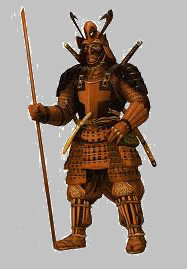How Japanese Swords are forged
Authentic Japanese swords are made from
specialized Japanese steel which consist of combinations of hard, high carbon
content steel and tough low carbon content steel. There are qualities in both
types of steel, both good and bad. High-carbon content steel is harder and able
to hold a much sharper edge than low-carbon steel, but it is brittle and can
break in combat. Low carbon content steel will allow the blade to be more
malleable, making it possible to absorb impacts without breaking but this lower
carbon content steel will become blunt in the process.
The blacksmiths who forge authentic
samurai swords take advantage of the best attributes of both of these kinds of
steel. The blacksmith begins by folding and welding pieces of both types of
steel several times in order to work out most of the impurities. The high
carbon content steel is then formed into a U-shape and a piece of low carbon soft
steel is placed in its center. The resulting block of steel is then hammered,
or “drawn out” to form a rough blank that will soon be a samurai sword.
At this point it may have only a
slight curvature or none at all. The curvature of a samurai sword is attained
by a process of heating and quenching the sword in water or oil. In this
process the sword maker coats the blade with several layers of moist clay
slurry which is a recipe that is unique to each sword maker, but in general
this this composition can include: clay, water, (sometimes) ash, grinding stone
powder and/or rust. The blacksmith will coat the edge of the blade with a
thinner clay layer than the sides and spine. After this the sword is heated and
then quenched in water, or oil. The clay functions as heat insulation so that
only the edge of the blade will be hardened with quenching. This also causes
the blade to form a slight curve due to the reduced strain along the spine.
The quenching process also creates the
distinct wavy line down the center of the blade. This is called the “hamon”
which can only be seen after the sword has been polished. The hamon is where
most say the beauty is to be found in samurai swords. Each hamon is unique to
the sword’s maker and serves as the forger's signature.
After the sword blade is forged it
will then sent to be polished. The polishing of samurai swords can take
anywhere between one and three weeks. The sword polisher will use finer and
finer grain polishing stones until the sword blade has a mirror finish. This
process is called glazing. This will make the blade razor sharp and reduce
drag, making it much easier to cut with. The curvature of a samurai swords
blade also adds to its cutting force.
If I've missed anything please let me know. You can follow this blog and receive more information on Samurai Swords as it's posted.
You can also come and visit us at www.allsword.com and see our inventory of swords, and our other blades!
Like allsword on facebook too! Lots of cool stuff to see there.



